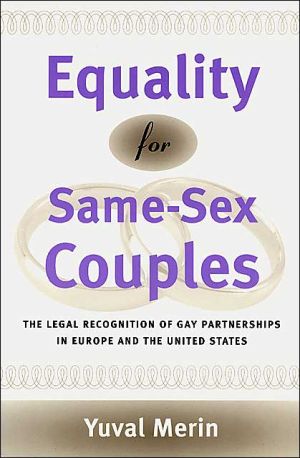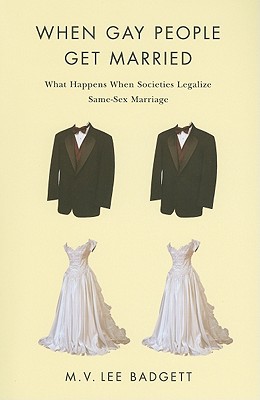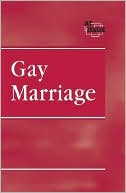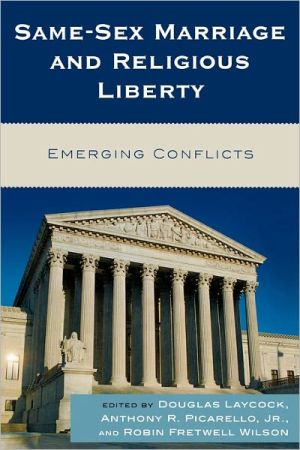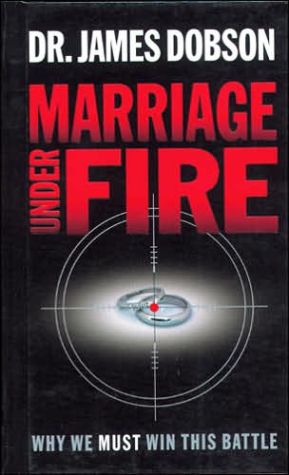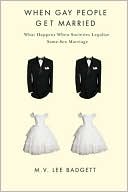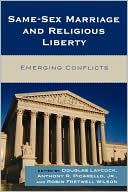Equality for Same-Sex Couples: The Legal Recognition of Gay Partnerships in Europe and the United States
During the past three decades, nations all over the world have been debating whether to allow same-sex couples to marry, or at least grant these couples various rights associated with marriage. In Equality for Same-Sex Couples, Yuval Merin presents the first comparative study of the legal regulation of same-sex partnerships worldwide, as well as a unique survey of the status of same-sex couples in Europe.\ Merin begins by providing a historical overview of the transformation of marriage from...
Search in google:
During the past three decades, nations all over the world have been debating whether to allow same-sex couples to marry, or at least grant these couples various rights associated with marriage. In Equality for Same-Sex Couples, Yuval Merin presents the first comparative study of the legal regulation of same-sex partnerships worldwide, as well as a unique survey of the status of same-sex couples in Europe.Merin begins by providing a historical overview of the transformation of marriage from antiquity to the present. He then identifies and critically compares four principal models for the legal regulation and recognition of same-sex partnerships: civil marriage, registered partnership, domestic partnership, and cohabitation. Merin concludes that all of the models except civil marriage discriminate against gays and lesbians just as the "separate but equal" doctrine discriminated against African Americans; thus, so-called alternatives to marriage, even if they provide the same rights and benefits as marriage, are inherently unequal and therefore unconstitutional.
Equality for Same-Sex Couples: the Legal Recognition of Gay Partnerships in Europe and the United States\ \ By Yuval Merin \ University of Chicago Press\ Copyright © 2002 Yuval Merin\ All right reserved.\ ISBN: 0226520323 \ \ \ Chapter 2 - The Changing Institution of Marriage and the Exclusion of Same-Sex Couples \ \ 2.1 A Few Words about the Idiosyncrasies of the Institution of Marriage and Its Ends from Ancient Greece to the Present\ \ Throughout history, there has been dissension over the definition of marriage and over the exclusion or inclusion of particular groups within the institution. Marriage is and has always been subject to change. From antiquity up to the present day, the institution of marriage has displayed wide geographical and historical variety. There have been radical changes in the concept of marriage, the way marriages are arranged (who has the power to make decisions about marriage), the motives behind marriage, and the degree of equality between the spouses. Current justifications for marriage and the perceived goals of the institution are based primarily on the assumption of mutual love between two people who come together on equal terms. Most discussions regarding same-sex marriage fail to take into account that throughout most of history, the affinity between love and marriage was not viewed in causal terms; it is only relatively recently that love has become the commonly assumed basisfor marriage and its primary justification. Thus, a discussion of the connections and tensions between love and marriage and a historical overview of the nature of heterosexual marriage, however brief, are imperative for an understanding of the current debate over same-sex marriage. \ \ Until the twentieth century, procreation and the creation of bonds between families, clans, countries, and various other social groups--in order to consolidate land, money, power, or politics--were the main goals of marriage, and marriage did not call for passionate sexual attraction. Emotional, loving relationships often existed outside the institution of marriage as much as within its confines. Whereas the common concept of modern Western marriage is of a secular, state-sanctioned, legally recognized, permanent, and exclusive union between two equal individuals who love each other, marriage in the Roman period and throughout the Middle Ages was largely a private institution with legal consequences and was usually characterized as a property arrangement between two families. Status and economic circumstances were the most important considerations in selecting a potential spouse. Even among people lacking property and the poor, who probably had much more leeway, the choice of partner was not based solely, perhaps not even primarily, on love; rather, a spouse was often chosen for her (or, somewhat more rarely, his) qualities as a workmate, since husband and wife were an economic unit as much as a social one. Boswell suggests the composite nature of the institution with a schematic chronology: "In premodern Europe marriage usually began as a property arrangement, was in its middle mostly about raising children, and ended about love. Few couples married in fact 'for love,' but many grew to love each other in time as they jointly managed their household, reared their offspring, and shared life's experiences." \ \ Of course, generalizations about interpersonal relationships are as hazardous as they are tempting. Moreover, insofar as marriage was an arrangement, and later an institution, that was not primarily predicated on law, we have little access to its original meaning and conception in historical periods when fewer records were kept than in our own time-- let alone in antiquity. However, it seems relatively safe to assume that the "invention of love" during the romantic period, which continues to wield its influence over our present-day popular culture, has left an indelible mark on the modern concept of marriage (or the ideal thereof ) and that this view of the married state is not necessarily inherent in the institution of marriage itself. Boswell would suggest, to radically simplify and compress a complex argument, that Greco-Roman marriage did not involve erotic satisfaction, sexual fidelity, or romantic fulfillment. The approach of medieval Christianity, which was largely retained by the Protestant Reformation, insisted upon the goodness of married love but considered it a nonpassionate partnership. This understanding largely ignored sexual and passionate love between the spouses. Paradoxically, in periods that saw the greatest idealization of love, such as the late Renaissance and the romantic period, it became ever more difficult to reconcile the fact of marriage with the transcendental aspirations that attached themselves to sexual love, so that for considerable stretches of history, the two remained culturally, if not actually, separate. \ \ Needless to say, cultural and religious attitudes toward sexuality, which directly influence the perception of marriage, have themselves fluctuated on the wide scale between tolerance and "liberalism" on the one hand and repression and intolerance on the other. We cannot simply assume some ongoing steady movement toward openness regarding sexuality within and outside marriage. For example, what some may regard today as promiscuous sexual relations seem to have been commonplace in certain parts of ancient Greece; and whereas the sixteenth century in Europe may be characterized by "moderate toleration" of sexuality, we find attitudes of repression in the seventeenth century, a move back to "permissiveness" in the eighteenth century, a repeat of sexual repression--especially of women's sexuality--in the nineteenth century, and a return to sexual permissiveness in the twentieth century. Similarly, there has not been steady ongoing progress toward equality between men and women, either in general or in marriage; we find, for example, that the woman of the sixteenth century was in many respects more equal to her husband than the nineteenth-century woman and that "[a] woman of 1200, even if she was unmarried or widowed, would have had no cause to envy a woman of 1700, and even less one of 1900." In the same way, attitudes toward homosexuality and same-sex unions have undergone dramatic shifts, from complete acceptance of such relationships between older men and younger, less powerful men in ancient Greece to full condemnation and repression during the Middle Ages. Likewise, the current concept of the "traditional family" is as contingent and mutable as views of the family in history, and it is inevitable that our ideas of family will further change and develop in the future. Historian Lawrence Stone has aptly made this point: \ \ \ It is wholly false to assume that there could have been any such thing as straightforward linear development. There is no reason to assume that the end-product of the affective individualism, namely the intensely self-centered, inwardly turned, emotionally bonded, sexually liberated, child-oriented family type of the third quarter of the twentieth century is any more permanent an institution than were the many family types which preceded it. This is strongly suggested by the fact that the cause of change lies in an unending dialectic of competing interests and ideas; by the historical record showing the highly erratic course of this evolution; by its very variable impact on different classes; by the strains to which it is currently being subjected; and by its very restricted geographical spread around the world.\ \ \ In much the same way that marriage and the family have been subject to various degrees of oscillation, we find varying views on the essential qualities of marriage, its nature, and its importance for the individual and society. Goethe argued that marriage is the greatest achievement of European culture and the solid foundation of any private life. Others, such as Benedetto Croce, viewed marriage as "the grave of savage love" and the grave of sentimentality. Similarly, there is little unanimity about what constitutes or constituted marriage in both modern and premodern societies. To quote a stance from the Greco-Roman period, "This is what it means to be married: to have sons one can introduce to the family and the neighbors, and to have daughters of one's own to give to husbands. For we have courtesans for pleasure, concubines to attend to our daily bodily needs, and wives to bear children legitimately and to be faithful wards of our homes." Undoubtedly, such an instrumental definition is not the one that springs to mind in the modern Western world. Not only the purpose and function of marriage, but also its very meaning--be it religious, social, or legal--vary from society to society and have altered over time. Such transitions have been conditioned, as we shall see, by politics, culture, and religion. \ \ 2.1.1 From Custom to Law \ \ There has been a tension throughout history between two interlocking aspects of marriage: marriage as a publicly policed institution and marriage as an individual experience. In different periods the emphasis has shifted from a definition of marriage as a private matter to a concept of it as a publicly bestowed institution and vice versa. However, as the discussion below shows, we can detect a gradual historical shift from the private to the public sphere, "from custom to law," and "from sacrament to contract." According to both Roman and Jewish law, marriage was a private act. During the Roman period, the state could police only the consequences of marriage, not its formation--the judge investigated only whether the couple lived together with affectio maritalis, "the intention of being married," as evidenced by their behavior and words. Until the end of the Roman period, the law had little direct involvement with the social institution of marriage. The origins of the earliest legal characteristics of marriage were dowry, the agreement to support the wife and pay her compensation upon abandonment, and the support of children; but when property was not involved, the relationship was dissolved simply by desertion or separation. Marriage, throughout much of the Middle Ages, was controlled by economic, political, and largely impersonal considerations. When no exchange of property was involved, marriage was simply a private decision of the partners to live together. It was sufficient that they regarded themselves as husband and wife and represented themselves to the community as such; no formal religious or civil ceremony or registration was required. \ \ Thus, in Western Europe before the Reformation, there was no de jure secular state-sanctioned marriage; marriage was a private matter regulated and governed only by custom or religious norms. Two people were held to be married not because they had gone through any particular ceremony but because they in fact lived together as man and wife; that is, people could form marriages simply by exchanging consents and co-habiting. During the late Middle Ages, the church developed a system of courts and procedures and a body of legal rules regarding marriage. In the thirteenth century, with the decree that marriage was a sacrament, Roman Catholic canon law fully transformed marriage into a formal institution, indissoluble and subject to far-reaching official regulation, with a system of ecclesiastical courts to enforce the rules. Once the rule of indissolubility was instituted--by establishing a procedure for judicial separation and providing causes of annulment--marriage was defined with more precision, and the canon law system of marriage impediments and prohibitions emerged.\ \ By the early sixteenth century, the church's canon law was the predominant law governing marriage in the West; it was the Council of Trent that in 1563 formalized and systematized the canon law, declaring contraception and abortion violations of the predominant goal of marriage: propagation and child rearing. The formal public ceremony in the presence of a priest, later required by nearly all Western legal systems as a condition for the validity of marriage, was not made mandatory until the late sixteenth century, and in England the church continued to recognize informal marriages as valid until the middle of the eighteenth century. Although Luther declared, during the first half of the sixteenth century, that marriage was not a sacrament but a "worldly thing" and an independent social institution subject to the state, Protestants preserved the religious aspects of marriage (for example, the requirement of the presence of a clergyman) and retained the view that procreation was its main goal. It was at the same time that Calvin introduced the concept of marriage as a covenant entered into by the entire community, otherwise confirming most of the Lutheran theological and legal reforms. \ \ The idea that regulation of marriage or adjudication of disputes concerning marriage could or should be conducted by the secular political community was not seriously considered before the sixteenth century and the Protestant Reformation. Owing to the influence of the Lutheran view and later that of the French Revolution, mandatory civil marriage and registration were gradually instituted in almost all countries of Europe and North America; this was the official replacement of marriage as a private matter by marriage as a state-regulated institution. As industrial capitalism and urbanization emerged, people ceased marrying without official recognition, and the state gained control of the institution. By the mid-eighteenth century, the definition of marriage was transformed in England as in the rest of Europe from a private sacrament to a secular and publicly authorized contract regulated by the state, but not until the nineteenth century did marriage come to be fully and extensively regulated by the law. By the middle of the nineteenth century, with the secularization of marriage jurisdiction and of the content of marriage law, countries all over the world had already created public registration and provided the option of a civil marriage ceremony. Yet some countries, such as the United States, continued to recognize informal marriages as an established legal institution (that recognition is still in effect as common law marriage in several states). Thus, marriage in America during that period could be made by the two partners themselves and only afterward recognized by law. This could be viewed as preservation of marriage as a private institution (a return to the privatization of marriage), but the recognition of common law marriages became very limited, and marriage in the United States had also been transformed into a public, state-regulated institution. We can safely say, then, that throughout the ages marriage has become more state regulated and less private and has thus been transformed from custom to law. Another change has taken place independently: romantic love has become the acceptable justification for getting or staying married. This is not to say that previous justifications, such as finance and procreation, are no longer justifications for marriage, but it is love--as the primary goal of marriage--that has become the ideal. \ \ 2.1.2 Conceptions of Love and Marriage from Plato to the Troubadours \ \ Much of Western thinking about sexual love and romantic love is rooted in Plato's philosophy. One expression of this can be found in a speech delivered by Oscar Wilde at his first trial in 1895: \ \ The "love" that dare not speak its name in this century is such a great affection of an older for a younger man as there was between David and Jonathan, such as Plato made the very base of his philosophy and such as you find in the sonnets of Michelangelo and Shakespeare-- \ \ \ a deep spiritual affection that is as pure as it is perfect and dictates great works of art like those of Shakespeare and Michelangelo.. . . It is beautiful; it is fine; it is the noblest form of affection. It is intellectual, and it repeatedly exists between an elder and a younger man, when the elder man has intellect, and the younger man has all the joy, hope and glamour of life. That it should be so the world does not understand. It mocks at it and sometimes puts one into the pillory for it.\ \ \ \ \ Continues... \ \ \ \ Excerpted from Equality for Same-Sex Couples: the Legal Recognition of Gay Partnerships in Europe and the United States by Yuval Merin Copyright © 2002 by Yuval Merin. Excerpted by permission.\ All rights reserved. No part of this excerpt may be reproduced or reprinted without permission in writing from the publisher.\ Excerpts are provided by Dial-A-Book Inc. solely for the personal use of visitors to this web site. \ \
List of TablesAcknowledgments1Introduction12The Changing Institution of Marriage and the Exclusion of Same-Sex Couples63Registered Partnerships in the Nordic Countries614Same-Sex Partnerships in the Netherlands1115Recognition of Same-Sex Partnerships in Other European Countries1306The Cohabitation Model1607Same-Sex Partnerships in the United States1778Contrasts between the Models of Recognition and the Status of Same-Sex Partnerships in the United States and Northern Europe2379Domestic Partnership, Registered Partnership, and Marriage26310Alteratives to Marriage and the Doctrine of "Separate but Equal"27811The Feasibility of Opening Up Marriage to Same-Sex Couples30812Conclusion338App. AEuropean Same-Sex Legislation in Translation343App. BDevelopments in the United Kingdom, Israel, South Africa, and Brazil355Bibliography359Index385
